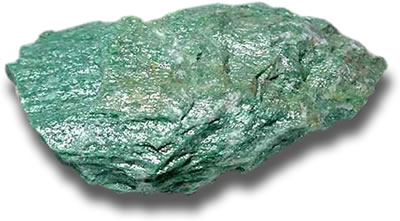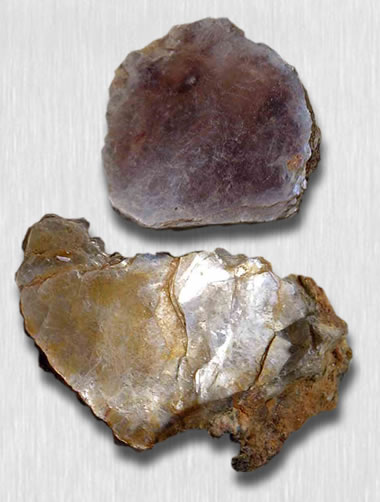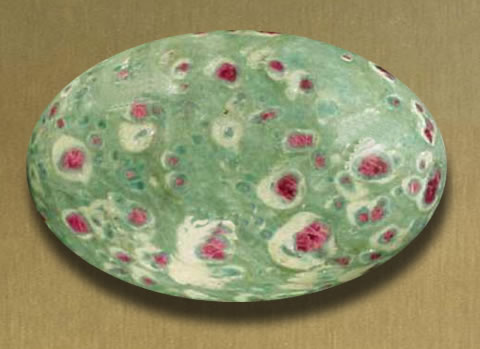Muscovite and Fuchsite
In the captivating realm of minerals, Muscovite and Fuchsite stand out as two remarkable varieties of mica that intrigue collectors and geologists alike. Muscovite, a common silicate mineral, is prized for its transparent to translucent sheets, ranging from colorless to delicate shades of gold, green, or brown, and has been valued for centuries in both practical and decorative applications. Fuchsite, a chromium-rich variant of Muscovite, dazzles with its vibrant green hue, often speckled with a shimmering sheen that lends it a distinctive charm.

Fuchsite Rough
Muscovite exhibits excellent heat resistance and has been utilized in the form of thin, transparent sheets as windows for high-temperature furnaces and ovens. This mineral serves as an insulator and was historically employed in the production of circuit boards and as an early form of window glass. The name "muscovite" originates from "Muscovy-glass," a term previously employed in Russia to describe the mineral due to its application in window-making.

Muscovite Rough
By chemical composition, muscovite is a potassium aluminum silicate hydroxide fluoride. It has a specific gravity of 2.76 to 3.00, a refractive index of 1.552 to 1.618, and forms in the monoclinic crystal system. Like kyanite, it has a variable hardness, with a Mohs hardness of 2 in one direction and 4 in the other. Muscovite can be colorless or show tints of gray, brown, green, yellow or (rarely) violet or red. It is translucent to transparent.

Ruby in Fuchsite Cabochon
The green chromium-rich variety of muscovite is known as fuchsite (pronounced FOOK-site). It can have an attractive blue-green to emerald green color and display a sparkly shine if the crystals are small. Due to its attractive color, fuchsite is often used as an ornamental stone. Fuchsite is sometimes confused with zoisite, since both green minerals can sometimes be found interspersed with ruby. However, zoisite is a distinct mineral with a different chemical composition (calcium aluminum silicate). Zoisite is also a much harder material with a Mohs hardness score of 6.5 to 7.
Muscovite is found all over the world but the largest and most important deposits are found in Russia, Pakistan, India, and Brazil. Muscovite is characteristic of granite and granite pegmatites, associated with quartz and feldspars. In pegmatites, it is often found in immense sheets that are commercially valuable. The United States produces only a small amount of high yield sheet mica. However, the US leads the world in the production of scrap mica. The major locations of scrap mica production in the US are North and South Carolina, Connecticut, New Mexico, Georgia and South Dakota.
|
